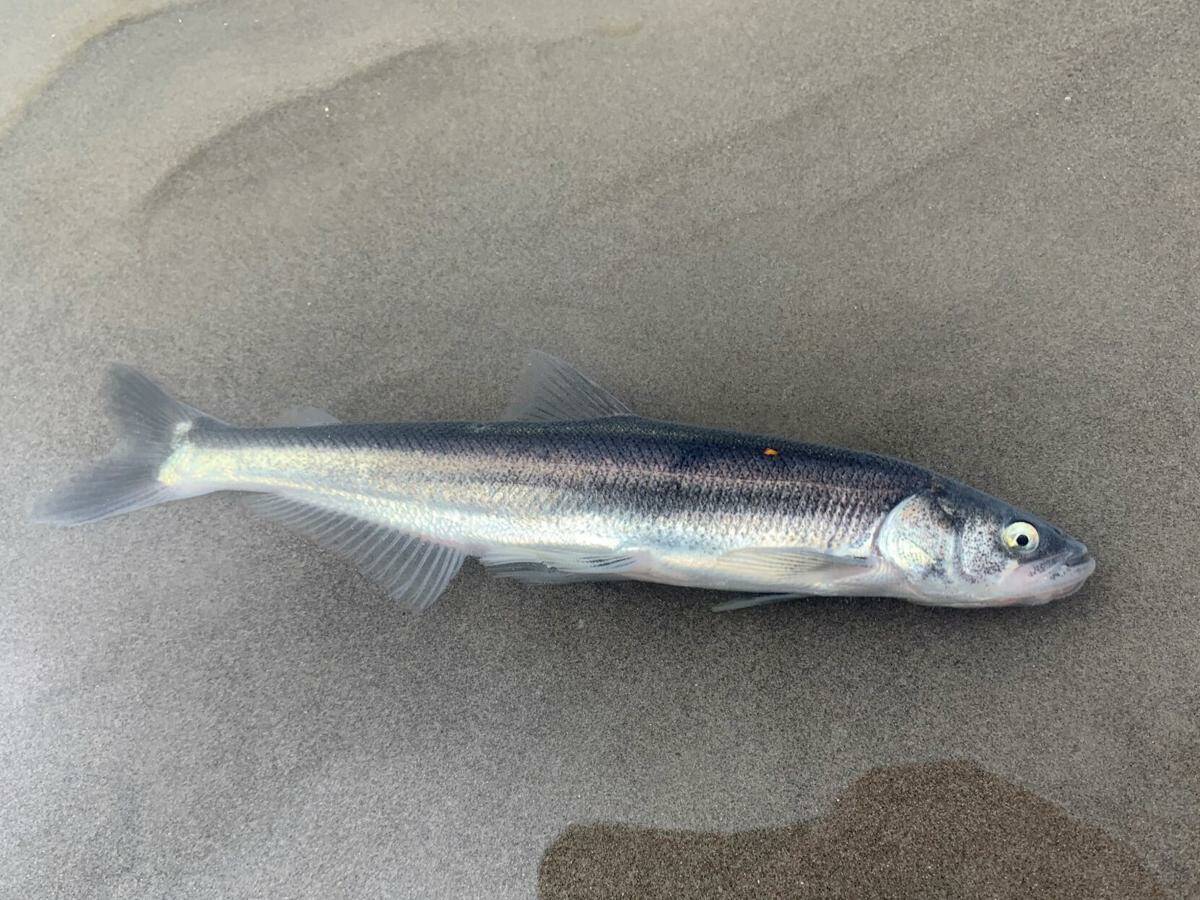The public is being asked to give their opinion on an environmental analysis focused on managing Eulachon in the Columbia River basin.
The Washington Department of Fish and Wildlife drew up a draft management plan for Eulachon, also known as smelt, in the Washington and Oregon populations.
“Overall, this updated plan is not a drastic departure from current management strategies,” said Laura Heironimus, Columbia River smelt lead with the Washington Department of Fish and Wildlife, in a news release last week. “The updated plan is meant to help us continue to put conservation first while still offering flexibility for strategic harvest when the population can support it.”
Commercial and recreational smelt fisheries once thrived along the Lower Columbia River and its tributaries, WDFW said in the news release. The Columbia River mainstem averaged anywhere from 200,000 to 1 million pounds of fish every year.
The Cowlitz River before 2010 accounted for the largest returns when it came to smelt, according to the Washington and Oregon Eulachon Management Plan. Smelt returns from the Cowlitz River alone could reach 2 million to 3.7 million pounds of fish on any given year between 1938 and 2010.
Abundance soon changed due to overharvesting, bycatch in shrimp fisheries and climate change, the report said.
By 2009, the Cowlitz River on average saw a startling decline of only 100,000 pounds of fish. Poor returns spelled bad news for smelt, and the fish is listed as threatened under the U.S. Endangered Species Act.
ESA’s listing led to the closure of most fisheries in the river basin between 2011 and 2013. A conservation-minded commercial fishery opened in 2014 to monitor smelt returns but saw such poor runs that even that fishery closed for a year in 2019.
In 2014, 18,600 pounds of smelt were commercially harvested in the mainstem of the Columbia River. In 2018, only 100 pounds were commercially harvested in the mainstem.
The only recreational fishing opened after 2014 did so only on the Cowlitz River and the Sandy River in Oregon with a limit of 10 pounds per angler, and only by emergency rule.
But the fish have made a cautiously promising comeback, according to a 2023 state report on sturgeon and smelt management.
The silvery, bright-eyed fish started to grow again in population around 2020 between the Skeena River in British Columbia and the Mad River in Northern California.
About 10,300 pounds of smelt were commercially harvested in 2020 in the mainstem of the Columbia River, then 11,000 in 2021 and 27,400 pounds in 2022.
A new management plan
The Washington and Oregon fish and wildlife departments are using this data to draft an updated plan that seeks to open recreational and commercial fisheries once again — with a few caveats and lots of caution.
The plan includes an updated monitor system focused on public outreach, environmental DNA, developing a publicly funded “test” fishery and acoustic surveys. These surveys, used in studying Pacific hake off the Oregon and Washington shores, sends a ping into the river to “listen” for echoes off objects in the water. The louder the echo, the bigger the fish.
Applying fishery management means a flexible, abundance-based approach that divides harvests into stepwise phases, the draft plan reads.
Under lower phases, only the Columbia River mainstem could open commercial fisheries. Recreational fisheries would be limited to the Cowlitz and Sandy rivers and with narrower windows for anglers. If the population trends upward, both commercial and recreational fisheries on the mainstem and in tributaries could open.
When population is high and increasing, harvest rates are set at 10% maximum based on data from the year prior. Commercial fisheries on the Columbia River and its tributaries could have 60 open periods for 24 hours per period. Recreational fisheries could open for up to 15 periods at 10 hours per period.
Depending on whether abundance grew or shrunk in the last two years and what trends predict, commercial and recreational fishing will vary. Harvest would be limited to percentages: about 13 million to 20.4 million pounds at 6%, 6 million to 12.9 million pounds at 4%, or 1 million to 5.9 million pounds at 2% based on the different designations.
Most open periods follow smelt return patterns, with the best fishing from February to April.
Anonymous public comments posted on WDFW’s website show some support for regulation.
“Recreational dippers should be required to have fishing licences (sic) like in Oregon,” one commenter said. “Also since the commercial fishery has very low participation it should be eliminated.”
“Many people take part in the recreational smelt dipping that don’t do any other fishing throughout the year,” another wrote. “It’s a family friendly activity and should not be required to have a full fishing license to participate. Maybe a 1 or 3 day license, like for clam digging. ALL commercial fishing in the Columbia should be eliminated, especially smelt.”


